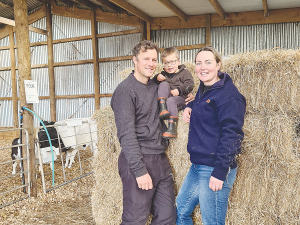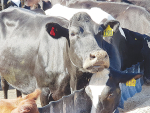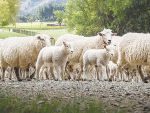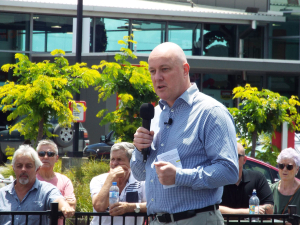Stratford couple Blair and Nicola Childs bought their first farm in 2019 - which also coincided with the start of their dairy farming careers.
They weren't all green, though. Nicola grew up on a local dairy farm at Mangatoki. Blair also grew up in Taranaki but was a cabinet maker by trade for six years, before building for another nine years.
Nicola worked as a veterinary nurse and rural animal technician.
In 2013 they bought 20ha, on which they grazed heifers. They then decided to sell the 20ha and buy their first farm in 2019, on which they milked 105 cows.
"A lot of people questioned how we could possibly do it, as it's definitely not the traditional route to dairy farming," Blair says.
"We had built and sold a few homes which provided us with the ability to purchase a small farm. It might not be traditional, but it has been beneficial for us."
For the two seasons they were at the farm, Blair continued to work off-farm as a builder, and Nicola worked part time on the farm, until she went on maternity leave with their son Oakley. They enjoyed farming so much that they decided to go bigger, and farm full-time.
They are now in their second season on a farm nestled at the base of Mount Taranaki. They started with 170 cows, but in a stroke of luck, the neighbouring farm came up for sale and they have been able to increase cow numbers to 280 cows.
They bought a herd locally to make up numbers, which they are progressively breeding to Holstein Friesian.
Production-wise, two seasons ago they did 515 kgMS. Last season was tough and they di 475 kgMS. They are targeting 525 kgMS out of their medium-stature cows.
"We set targets realistically so we can meet them, and build on that," Blair says. "We feed 3.5-4kg of a standard palm kernel blend in the shed, and, other than a little maize at the end of last season, the system is predominantly pasture-based."
Of the 280 cows, around 40 are registered Holstein Friesian. There will be that many again coming through from the new side of the herd, Blair says, to make an overall total of around 40% Holstein Friesian.
"You have to start somewhere," he says. "Everything is going to Friesian or Friesian cross. We have a high component-producing cow with high milksolid percentage, and we don't want to lose that; we would like to go as far black and white as possible without compromising on components, as we are commercial farmers after all."
Calving started July 25 this season, from which they will rear 60-65 replacements.
"This season we had the luxury of having 180 cows in-calf to AB," Blair says.
"Previously we've really had to scrape and buy in heifers.
"In the weeks leading up to calving we went through the herd identifying the good cows and the calves we were going to keep, and we'll sell the surplus heifers. This is the first season that we have been in the position to pick and choose."
With mating this season, they pushed the calving date back to around August 3. They only brought calving forward last season because they had excess maize to feed and were able to get some more days in milk.
They followed the following mating plan last season and will do so again this season: four weeks of AB, followed by bulls for three weeks, then back to short gestation AB for three weeks - 10 weeks all up.
When the Childs choose bulls, they select sires based on capacity, udders, temperament and fertility traits.
Blair says he would love to get his hands on some Maire Mint Fire-Up semen, which is proving difficult.
"We have two daughters in the herd and we'd like more, but I think our timing was such that when we were on our way in, he was on his way out," he says.
"Going forward, we are using Meander SB Alias-ET S2F, and Meander Shot Alibi-ET S3F. We used a lot of Alias this season, and you can't really beat Alibi for fertility and udders."
Favourite Breed
When it comes to explaining why Blair and Nicola Childs love the Holstein Friesian breed so much, it’s a sentiment that’s hard to put into words.
“We love the uniformity of having a black and white herd,” Blair says. “We also love the sheer strength of the breed.”
The Childs’ want to continue to make production a focus.
“Although we’ve set a target of 525 kgMS, we’d like to push past 550 kgMS at least,” Blair says. “We’d love to see what our herd can do. It will take some time to get our breeding through and see some capacious, highproducing cows. Looking at the heifers that will join the herd this season, it is really the first line of our own breeding. There are daughters of Maire IG Gauntlet-ET, Maire FI Golddigger and Woodcote FI Mastermind – eight to ten of each – and they really look the part.”
They currently have seven contract cows in the herd, but only one is Holstein Friesian.
“We’d like to have some more Holstein Friesian contract cows in the herd and have a Holstein Friesian bull in a breeding company team,” Blair says.


















